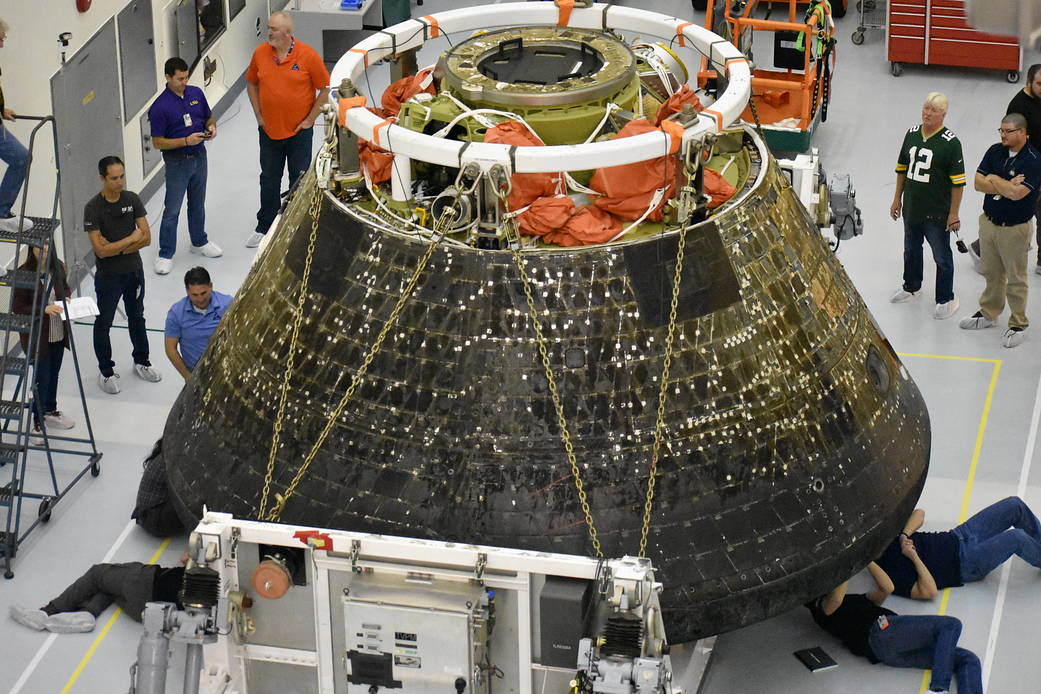Inside the Multi-Payload Processing Facility at NASA’s Kennedy Space Center in Florida, engineers and technicians conduct inspections of the heat shield on the Orion spacecraft for the Artemis I mission. Orion returned to Kennedy on Dec. 30, 2022, after splashing down in the Pacific Ocean on Dec. 11, following a 1.4-million-mile mission beyond the Moon and back.
In this photo, technicians underneath the crew module closely examine the heat shield, which endured temperatures near 5,000 degrees Fahrenheit during reentry through Earth’s atmosphere. The heat shield will be removed from the spacecraft and taken to another facility for further detailed inspections.
Teams also are inspecting the windows of the capsule along with the thermal protection on the back shell panels that cover the spacecraft to protect it from the harsh conditions both in space and during the high-speed, high-heat reentry.
On top of the capsule is the deflated crew module uprighting system, which is a group of five air bags that position the capsule right side up after splashdown and were deflated prior to transport back to Kennedy. While still in the transfer aisle of the facility, engineers are in the process of removing external avionics boxes. Technicians will take air samples within the capsule ahead of repositioning it into a service stand that will allow access to the interior. Upon opening the hatch, technicians will remove the internal avionics boxes and payloads. After conducting detailed inspections and testing, the avionics boxes will be reused for the Artemis II mission.
De-servicing will continue in the coming months with the removal of the hazardous commodities that remain on board. Once complete, the spacecraft will journey to NASA Glenn’s Neil A. Armstrong Test Facility for abort-level acoustic vibration and other environmental testing.
Photo credit: NASA/Skip Williams





























